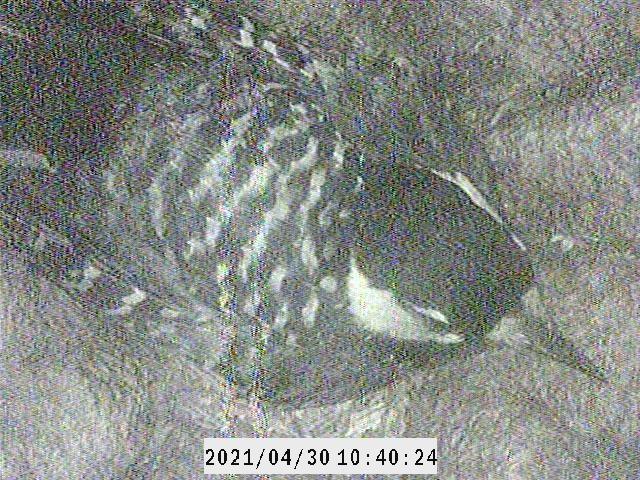By Chambers English, SCA Forest Technician Intern
Smoke trails behind me as I hike up the next drain along Falling Creek at Piedmont National Wildlife Refuge. Drip torch in hand, I paint a ribbon of fire near the ecotone of hardwoods and pines as the trees leaf out and dogwoods bloom this spring. Flames creep up the hills, setting back the successional clock of underbrush and encouraging herbaceous growth in the understory needed by native species. Birds will return to this blackened earth minutes after the fire passes, and in days, grass will poke through the ground. Fire is a welcome and natural force here.
The benefits of prescribed burns
Prescribed burns during the dormant and growing season play a key role in the restoration and management at this 35,000 acre refuge south of Atlanta, providing key habitat for native species and healing the land after decades of degradation. Where public lands are impacted by surrounding urbanization and legacies of damaging land use, active management such as prescribed fire helps bring ecosystems to healthier states.
Poor farming practices from European settlement through the Depression exhausted the clay hills of Georgia. Rainstorms washed away topsoil on steep-sloped fields of cotton, leaving gullies deeper than swimming pools and the land forever changed. Under increasing financial straits from erosion and the attack of the boll weevil on cotton crops, farmers began to question their outlooks – and the refuge system saw an opportunity for a restoration challenge to prove “any kind of land could be managed for wildlife.”
Erosion gully and early prescribed fire effects surveyed by refuge staff in 1941.
Helping Habitats
While surrounding lands have continued to be farmed, planted in trees for short rotation periods, or developed in the decades since the Depression, the refuge has provided rare continuity for declining habitats at a meaningful scale. 80+ year old loblolly-shortleaf pine uplands at Piedmont provide crucial habitat for a core population of federally-endangered red-cockaded woodpeckers. The woodpeckers excavate old, live pine trees in open pine forests to make their nesting cavities, feeding their young insects, which thrive in the fresh growth from prescribed fires.
The ecosystems they call home have declined significantly over the past 150 years as fire suppression, intensive silviculture, and development fracture and close off their habitat. Found primarily in longleaf forests in the coastal plain, these little birds persisted here in the Piedmont because of remnant shortleaf and loblolly pine stands, the cultural burning and grazing practiced by early settlers, and years of active management by refuge staff. Through forest management activities such as prescribed fire and forest thinning, refuge managers create and maintain the habitat.
Nesting red-cockaded woodpecker in a tree cavity incubating her clutch of eggs.
While the barren hills of Piedmont are grown back over now, the erosion gullies remain. Topsoil, unfortunately, is not as quickly restored as some flora and fauna are. Human actions precipitated many of the problems that Piedmont and other landscapes have faced through the years, but responsible stewardship and restoration is slowly bringing balance to this ecosystem again.
As I help count a record breeding season for the red-cockaded woodpecker here, I am reminded of the patience and care it takes to manage and protect our natural world. We have an obligation to safeguard functional habitats for all species and a healthy world for all people. Understanding our ecosystems and actively managing them for health and sustainability will see us through the next century of restoration.

